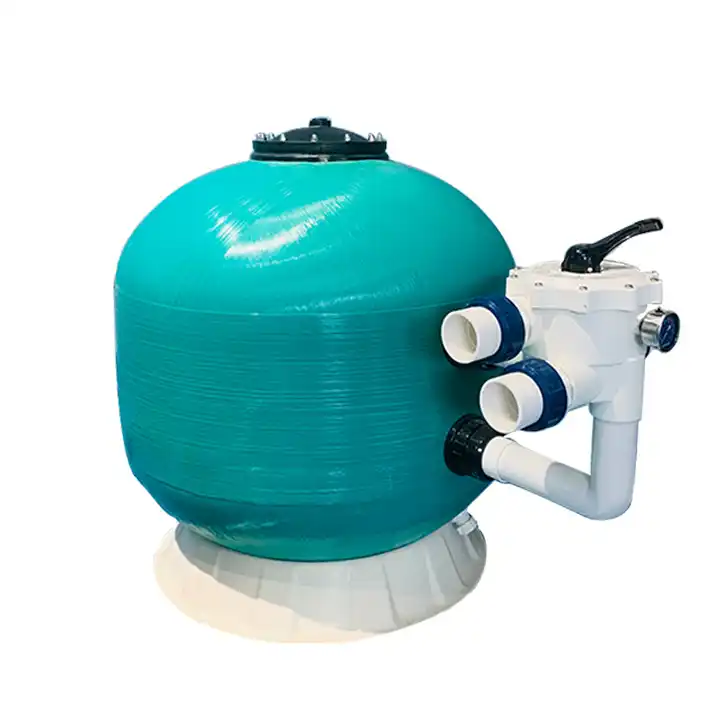Swimming pool maintenance is crucial for ensuring a clean and enjoyable water experience. Among the vital components in the pool filtration system, the water pump plays a pivotal role. However, using the pump requires careful attention to certain considerations to maintain optimal functionality and water quality.
I. Considerations when using the filter water pump:
- Ensure an adequate water level in the pump: Before starting the pump motor, it is essential to ensure that the pump is filled with water. Starting the pump without sufficient water may damage the shaft seal, leading to water pump leakage or immersion issues.
- Carefully open the nut cover: Before opening the pump’s nut cover, follow these steps: turn off the pump’s power, close the inlet and outlet valve, and release the air pressure in the pump and pipes. This ensures safety during maintenance or repairs.
- Prevent loosening of screws: While the pump is running, avoid loosening the screws on the pump. This could cause the pump to lose balance or operate unstably, affecting the overall pump performance.
- Avoid blocking the drain outlet: Swimmers should avoid blocking the pool’s drain outlet to prevent accidents. Blocking the drain outlet may hinder water flow, increasing the risk of drowning, especially for children. Therefore, ensuring the clear passage of the pool drain outlet is crucial.
- Supervise children when swimming: Adult supervision is necessary when children are swimming to ensure safety near the pool and prevent accidents, safeguarding the life of each swimmer.

II. Considerations when starting the pump:
- Release air: Before starting the pump, all air from the filter and pipe system must be released. This ensures that the pump is not affected by air pressure during operation, maintaining normal water flow and pressure.
- Water level higher than pump position: If the pool water level is higher than the pump’s position, follow these steps:
- Open the inlet and outlet valve.
- Start the pump, ensuring smooth water flow.
- Open the pump’s cover.
- Fill the pump with water.
- Close the cover and then start the pump.
- Clean and inspect the sealing ring: Before starting the pump, thoroughly clean and inspect the sealing ring. Ensure the sealing ring is free from damage or impurities to prevent leaks during pump operation.
- Tighten the cover: After starting the pump, place the pump cover and rotate it clockwise to tighten. This step ensures a tight seal, preventing leaks or other issues during pump operation.
III. Possible pump faults:
- Motor cannot start:
- Check if the power supply is disconnected or has a short circuit.
- Examine the fuse for melting or overheating.
- Regularly lubricate the bearings to prevent them from seizing.
- Inspect the motor coils for burnout.
- Check the condition of the centrifugal pump and the functioning of overload protection.
- Ensure proper and secure electrical wire connections.
- Verify if the voltage is sufficient.
- Motor overheating:
- Confirm that the voltage meets the pump’s requirements.
- Check if the working voltage matches the motor voltage.
- Ensure a well-ventilated environment around the pump.
- Pump cannot draw water:
- Confirm that the pump has started.
- Ensure that the inlet or outlet valve of the water pump is open.
- Inspect the pipeline system for the entry of water or air.
- Regularly check and replace damaged impellers.
- Excessive pump pressure:
- Ensure that the inlet and outlet valve of the water pump are fully open.
- Check that the return pipe is of sufficient diameter.
- Clean the filter regularly to prevent sediment accumulation.
- Pump and motor noise:
- Regularly clean the filter basket to prevent hair or debris accumulation.
- Inspect motor bearings, replacing them if damaged.
- Ensure the inlet valve is fully open to reduce water flow resistance.
- Clear any partial blockages in the inlet pipe.
- Regularly check the suction port for blockages or excessive fineness.
- Investigate abnormal pump operation.
In conclusion, adhering to the guidelines for pool filter water pump operation is crucial for the overall health of the pool. Neglecting these precautions could result in poor water circulation and compromised water quality. By keeping these considerations in mind, pool owners can ensure a refreshing and safe environment for swimmers.
